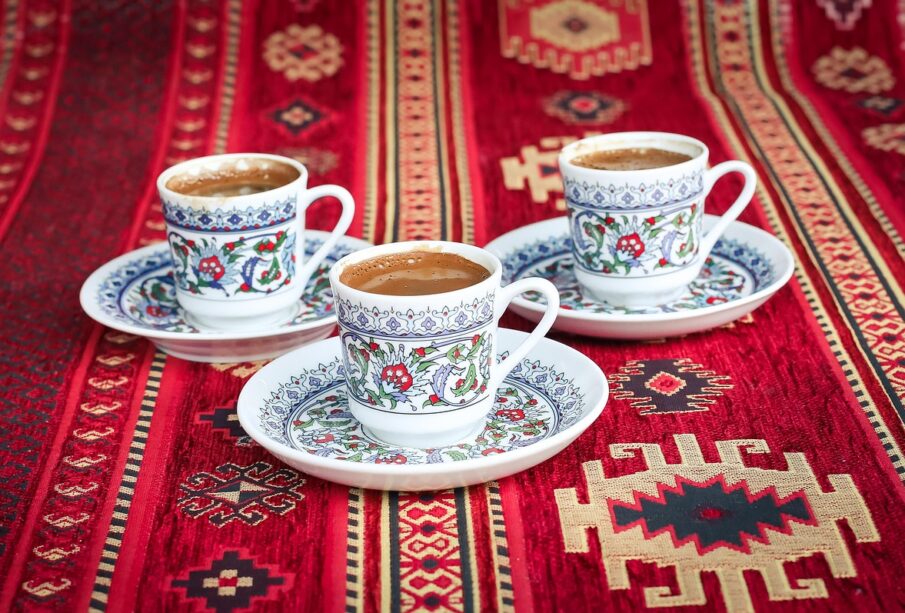Your Future in a Cup: A Beginner’s Guide to the Art of Turkish Coffee Fortune-Telling

Growing up in Turkey, the end of a shared coffee was often the beginning of another ritual. I’d watch, fascinated, as my grandmother would take a friend’s cup, her eyes tracing the intricate patterns left by the dark, velvety grounds. This wasn’t just about predicting the future; it was a moment of connection, a shared story whispered over the remnants of a beautiful beverage. This ancient tradition, known as kahve falı (coffee fortune-telling) or tasseography, is as much a part of our coffee culture as the cezve (the iconic long-handled pot) itself. It’s a playful, intuitive art that transforms a simple coffee break into a meaningful conversation. I invite you to learn this cherished practice, not as a mystical science, but as a new way to connect with your coffee, your friends, and even your own intuition.
More Than Grounds: The Heart of the Ritual
Before we look for symbols, we must understand the spirit of the tradition. Kahve falı is not about rigid predictions. It’s a storytelling tool, a gentle nudge to reflect on our hopes, dreams, and worries. In Turkey, it’s a deeply social act. We never read our own fortunes—it’s considered biased and, frankly, less fun! The reading is a gift from the fortune-teller to the drinker, an act of listening and interpretation. It’s a tradition so integral to our culture that it is recognized as part of UNESCO’s Intangible Cultural Heritage of Humanity.
The Step-by-Step Art of Reading the Cup
Ready to try? It’s simpler than you think. The entire process is a mindful ritual, from the first sip to the final interpretation.
Step 1: Brew and Enjoy with Intention
First, prepare a cup of authentic Turkish coffee. (If you’re new to this, you can follow our Ultimate Guide to Brewing Turkish Coffee). The key is to sip your coffee thoughtfully. As you drink, focus on a question you have in mind or simply be open to any messages the cup might hold. Remember to drink only from one side of the cup. Leave the last sip, a small amount of sludgy liquid, at the bottom. This telve, the thick sediment, is the ink with which your story will be written.
Step 2: The Swirl and the Wish
Once you’ve finished, hold the cup and make a wish. With the remaining liquid and grounds, gently swirl the cup three times in a clockwise motion. This helps to spread the grounds along the inner surface of the cup, creating the patterns you will later read.
Step 3: The Flip
Now, place the saucer firmly over the top of the cup, creating a seal. With one swift, confident movement, turn the cup and saucer upside down and place them on the table. This is the moment the magic happens, as gravity pulls the excess grounds downwards, leaving behind a unique tapestry of symbols.
Step 4: Patience and Cooling
Let the cup rest for 5 to 10 minutes. This allows it to cool and for the grounds to set properly. A common tradition is to place a coin on top of the overturned cup to ward off negative interpretations, or a ring if the reading is focused on matters of the heart. If the cup is so well-sealed to the saucer that you can lift them as one, this is called a “Prophet’s Cup,” meaning your wish will come true and no reading is necessary!
Step 5: The Unveiling
The moment has come. Gently lift the cup. The patterns inside are your canvas. The saucer can also be read; it is often interpreted as representing your home or immediate family life. If a large chunk of grounds has fallen onto the saucer, it’s believed that your worries and troubles will soon depart.
How to Interpret the Cup: A Map of Your Life
Think of the cup as a map. Where a symbol appears is just as important as what it is. While there are many ways to divide the cup, a common method is to view it in sections:
- The Bottom of the Cup: Represents your past, your home, and your heart.
- The Middle Section: Relates to your present situation.
- The Rim: Signifies your future.
- The Area Around the Handle: Interpreted as your love life and close relationships. Symbols here often relate to romance.
- The Side Opposite the Handle: Represents money, career, and your connection to the wider world.
Reading generally starts from the handle, moving from right to left if the drinker is right-handed, and left to right for a left-handed person. White spaces are seen as positive, while large, dark clumps can signify worry or obstacles.
A Beginner’s Glossary of Common Coffee Symbols
Interpretation is highly intuitive, and the best readings come from the heart. However, certain symbols have developed traditional meanings over centuries. Here are some of the most common ones you might see:
Remember, context is everything. A snake next to a heart could mean deceit in love, while a fish next to a house could signify a financial gain related to your home.
FAQ Section
Q: Do I need a special type of coffee or cup? A: Yes, for the best results, you need finely ground Turkish coffee, which creates the necessary sediment. Traditional cups, called fincan, are small and white or light-colored on the inside to make the dark grounds easy to see.
Q: Can I read my own fortune? A: Traditionally, you should always have someone else read for you. It’s believed that your own hopes and fears will bias your interpretation. It’s a social ritual meant to be shared.
Q: Is Turkish coffee fortune-telling taken seriously? A: It’s a spectrum! For most, it’s a beloved cultural pastime, a fun and engaging way to connect with friends over coffee. It’s more of a conversation starter and a tool for self-reflection than a serious form of divination. However, the feelings and conversations it inspires are very real.
Q: What if I can’t see any clear symbols? A: Don’t worry! It takes practice. Start by looking for the general feel of the cup. Is it dark and heavy, or light and clear? Sometimes the message is in the overall pattern, not just one specific symbol. Let your imagination guide you.
Your Story Awaits
Turkish coffee fortune-telling is a beautiful tradition that invites us to slow down, connect, and find meaning in the patterns of our lives. It’s a testament to a culture that sees coffee not just as a drink, but as the foundation for conversation, community, and even a little bit of magic. So next time you brew a pot of Turkish coffee with a friend, don’t just stop when the drinking is done. Take a moment, flip the cup, and see what stories are waiting for you inside.
















